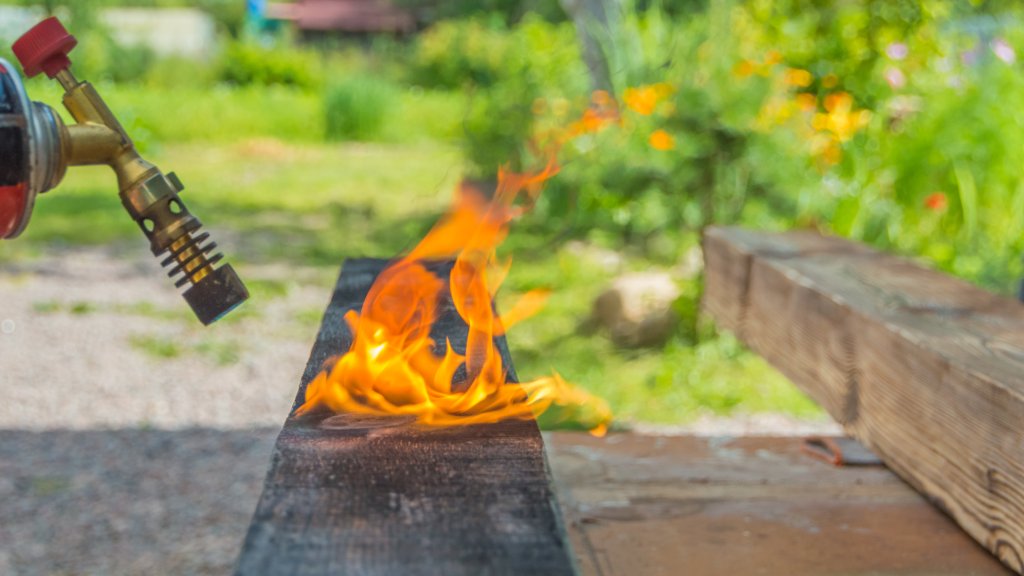Shou Sugi Ban Raised Beds – Burning Wood For Rot Resistance
Have you heard of Shou Sugi Ban raised garden beds? This method of charring wood preserves it organically, seals it and makes it strong and long-lasting.


Japan is one of those countries with centuries of culture that still cling to modern-day life. They have a practice called Shou sugi ban or Yakisugi, a non-toxic method of preserving wood. Shou sugi ban means “burnt cedar board” although several other types of wood may be used. This method of charring wood for raised beds provides a durable, long-lasting structure without adding chemicals. Shou sugi ban raised beds are attractive and provide an organic housing for all your fruits and vegetables.
What Is Shou Sugi Ban?
Shou sugi ban appears to date back to the Edo period in Japan. There are surviving structures in Japan that are centuries old and feature this wood preservation method. In the process, the wood is charred and oiled. The resulting material is resistant to pests, rot, and fire. It has an alligator skin texture and a deeply black color. In traditional preparation, 3 boards were tied into a chimney of sorts and fire was allowed to travel up the chimney, charring the wood.
Originally it was a building material of the lower class because it was inexpensive and durable. Around the 1970s, Shou sugi ban became more widely known as Yakisugi and its popularity soared anew. Today it has become a much sought-after building material.
Benefits of Shou Sugi Ban Raised Beds
A Shou sugi ban raised garden bed is long-lasting and durable, as well as relatively inexpensive. The process actually strengthens the wood and makes it impervious to rot for long periods of time. During the burning, excess moisture is drawn out of the wood and the grain seals together. The char effectively reduces and repels insect pests. It also seals the wood making it difficult for insects like termites to burrow into the structure. Burning wood for raised beds also leaves behind an attractive, modern yet rustic, finish.
How to Make Shou Sugi Ban Raised Beds
While cedar, specifically red cedar, is the traditional wood used, other woods are also suitable. Pine, oak, hemlock, and maple may also be used. Since you are burning wood for raised beds, the type of wood you use depends on your preference, budget, and aesthetic.
First, you will construct the beds in whatever dimensions you require. Wood plank, corner bracing pieces, and an optional cap piece combined with screws will accomplish this part of the job. It is probably easier to char the boards prior to assembly, but it could be done afterwards. This will be up to you. A large propane torch is the easiest way to get the char. The flame is allowed to burn just long enough to char the surface. In most cases the wood will not truly catch fire, but have water handy just in case.
Finishing Shou Sugi Ban
After charring, brush the wood with a wire brush. This will eliminate some of the excess ash, but also push the ash into cracks and crevasses, filling any gaps. Finally, seal the wood with linseed or tung oil. These are natural oils. Use a brush to apply a thick coat of oil to all surfaces of the boards. Let it soak in for 10 minutes and then use old rags to wipe any excess away. If the boards have dry spots, reapply in the same manner.
Sign up for the Gardening Know How newsletter today and receive a free copy of our e-book "How to Grow Delicious Tomatoes".
Safety Considerations
The first caution is obvious. We are working with fire. Wear appropriate clothing, eye protection, boots, and stout, fireproof gloves. Have water ready nearby. Burn the planter wood where the surface it is sitting on will not catch fire. A cement driveway or patio is ideal provided it is far enough away from any structures. Gravel spaces work as well but soak the area first in case some errant plant material is present that might catch fire.
Frequently Asked Questions
What Are the Problems With Shou Sugi Ban?
For some gardeners, this project isn’t practical due to the lack of building and charring space. Also, if you like the charm of a white picket fence, aesthetically your beds might look better whitewashed. Over time, the black char on the wood will begin to fade and might require retreatment. The finish will also not be consistent due to the natural nature of the wood. This is a labor-intensive, messy process that isn’t for everybody.
What Kind of Wood Is Best for Shou Sugi Ban?
Cedar is the material used historically, but other woods are suitable. Cypress, maple, spruce, oak, hemlock, and pine are all woods that are treated to this process today.

Bonnie Grant is a professional landscaper with a Certification in Urban Gardening. She has been gardening and writing for 15 years. A former professional chef, she has a passion for edible landscaping.